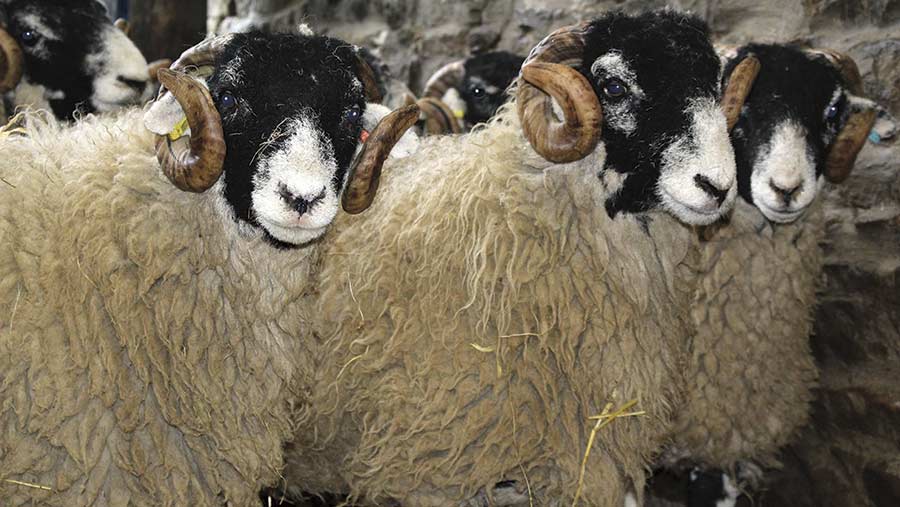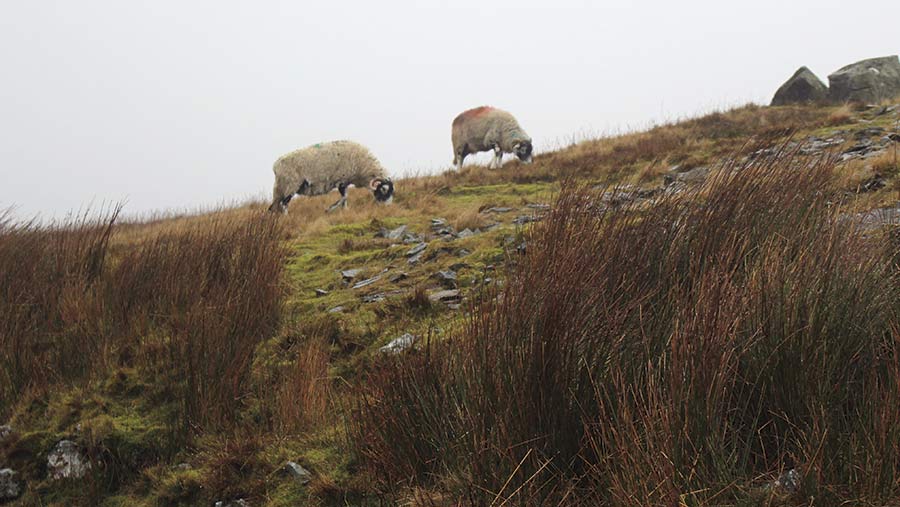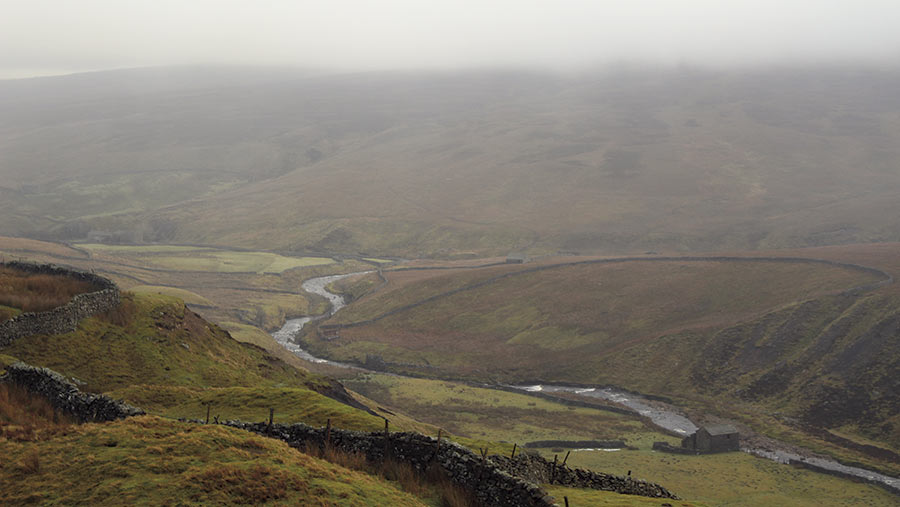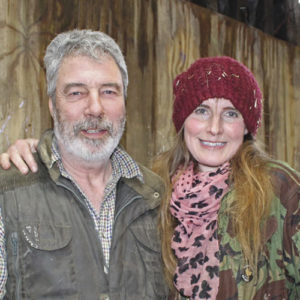Farming on a remote Yorkshire livestock farm
For first generation tenant farmers Clive and Amanda Owen, picking a breed of sheep and cattle that suits their farm has been paramount to the success of their business.
Farming in the remote Yorkshire Dales near Keld, Richmond, Swaledales and Beef Shorthorn are the breed of choice to graze the exposed 810ha (2,000 acres) of land, which rises from 400m to 500m.

See also: Swaledales sell to £40,000 at Kirkby Stephen
Swaledales have always been at Ravenseat Farm since Mr Owen arrived in 1989, but only more recently Beef Shorthorn cattle have been introduced to replace Continentals, in order to meet agreements set out in stewardship schemes.
Mr Owen says: “We are in year four of the Higher Level Stewardship and have changed from Continental cattle to Beef Shorthorn as they suit the farm. We have 20 and are slowly building up.
They have to be pedigree for the scheme so they are contributing to the genetic pool,” he adds.
Farm facts
- Tenant farmers for Gunnerside Estate
- 810ha (2,000 acres)
- 1,000 Swaledale ewes dropping down to 700
- 20 Beef Shorthorn
- Farm at 400-500m
- Land mostly rough grazing and some meadows
On the flip side, Swaledale numbers are being reduced from 1,000 to 700 to meet the stewardship agreement, which aims to regenerate heather and wildflower meadows and protect ground nesting bird sites.
They have also planted about 4ha (10 acres) of trees to encourage black grouse.
“We are grazing high ground that hasn’t had cattle on for a long time, with the idea of improving and encouraging different species,” says Mr Owen.
Cattle
The Owens are breeding all their own Shorthorn replacements, using a bull purchased in partnership with another farmer.
Cows calve down in September and offspring sold as stores at about 15 months old.
“On Monday we had a good trade for bullocks making £1,005 at 15 months old. They (Beef Shorthorns) are quite sought after as there is a bit of a premium for them.”
Sheep
Swaledales are bred pure with some crossed with a Bluefaced Leicester. Draft ewes and some rams are sold, with some lambs finished off feed inside and the remainder off grass.
Their Swaledale genetics are popular, with the most amount paid for one of their rams being £28,000 at Hawes in October 2010 and last year selling to £10,000.
“Winning at Hawes in 2010 was a definite highlight,” recalls Mr Owen.
Ewes lamb mostly outside starting in mid-April for five to six weeks. “The moor is not ready for the lambs until May,” he adds.
And a lot of preparation goes in to making sure lambs do well in this harsh environment.
All ewes are pregnancy scanned so they can manage the sheep on the moor.
“Knowledge is power,” says Mrs Owen. “You know what you are dealing with and forewarned is forearmed,” she adds.
Different colour raddles are used at tupping and ewes are then brought down to the lower ground nearer the farm, a week at a time, just before they are due to lamb.

This allows the Owens to monitor the ewes closely as they lamb, as they can “lamb anywhere”, says Mrs Owen.
Many ewes will lamb a single or in some cases twins, but triplets are almost non-existent, which is something the Owens are glad about.
“We like to have one strong lamb so they are up and suckling and can handle the storms,” she says.
Ewes and lambs are put back on to the moor after lambing, with the exception being twin-bearing outfits, which are kept at the farm until lambs are weaned.
The ewes are then not seen again until clipping in the summer and they are clipped in the traditional fashion, says Mrs Owen.

“We clip the old-fashioned way, starting at the neck and working our way down,” she says.
The first batch of lambs are ready to sell in early August, which are the Mule wethers and the aim is to finish all lambs by Christmas. These fat lambs are sold through Hawes and Kirkby Stephen.
They aim to sell about six pedigree tups a year, but it is mostly draft ewes and surplus gimmers being sold.
When breeding their Swaledales, they are not only looking to breed a hardy sheep, but they are also looking to produce stock with good conformation, teeth and as Mr Owen puts it, “something with a little sparkle”.
“We want the white white and the black black, without the hair falling out. It’s getting that sparkle that is the hard bit,” says Mr Owen.
Learn about the Owens

Clive and Amanda Owen
Amanda Owen has just realised her second book called A Year in the Life of a Yorkshire Shepherdess.
In the book Amanda describes the age-old cycles of a farming year and the constant challenges the family faces: from being cut off in winter to tending their flock.
Amanda originally grew up in Huddersfield, but was inspired by the James Herriot books to leave her town life behind and head to the countryside.
After learning her craft as a freelance shepherdess, cow milker and alpaca shearer, she eventually settled down as a farmer’s wife with her own flock of sheep at Ravenseat.
Happily married with nine children, she wouldn’t change a thing about her hectic but rewarding life.
The paperback book costs £7.99 and is out now.
